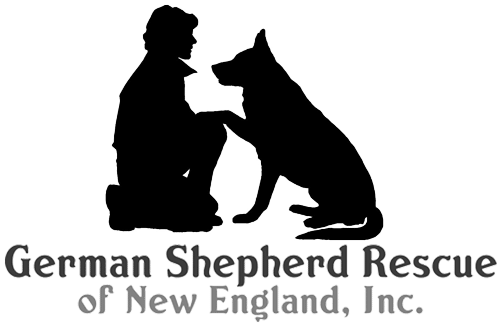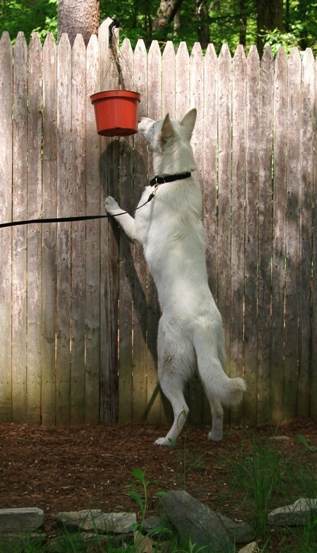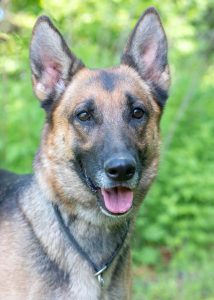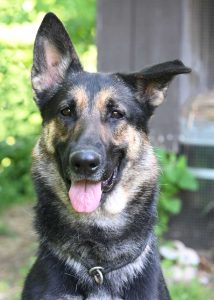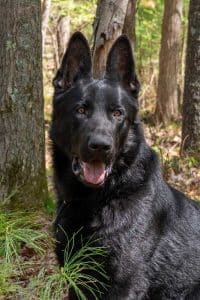GSRNE foster homes must be located in one of the six New England states (Connecticut, Maine, Massachusetts, New Hampshire, Rhode Island, and Vermont). Our foster homes must also be located where GSRNE volunteers can support them. As we add new volunteers our areas of support are growing, however there may still be some locations with too much distance to travel. Please inquire if you have questions about your location.
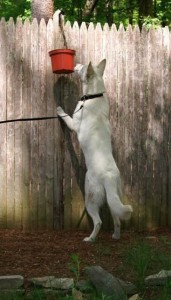
Sassy is safe in her fenced yard
- Any children living in your home must be ten years or older. This is a safety consideration for all.
- If you do not own your home, you need your landlord’s written permission to have a GSRNE foster dog in your home.
- If you live/own a town house or condominium, you will need the association’s written permission to have a GSRNE foster dog in your home.
- If you have roommates in your home, you will need their written permission to foster. In addition, if you are approved as a foster home, your roommate(s) will be required to sign a liability waiver.
- All foster home applicants must have a fenced area attached to their home’s back or side door. The fenced area is for the dog’s safety and your convenience. The fence needs to be a minimum of 4′ high and 5′ high is preferred for most dogs. The fence doesn’t have to be elaborate or expensive, nor does it have to encompass your entire yard. The Invisible Fence alone cannot be used for foster dogs as most German Shepherd dogs will run through the boundary.
- For senior and some special needs dogs, the fencing requirement may be waived as exercise requirements for some of these wonderful dogs can often be fulfilled with leash walks and in-house play.
- If you own a dog, it needs to be at least tolerant of other dogs and you must have the ability to separate the dogs from interacting at times. We want to minimize the risk of fights. If you have more than one dog in your home, you may not be approved to foster as it increases the risk of fights in the home with multiple dogs. It also changes the dynamics of the other dogs in the home.
- If you own a cat(s), small dog, or other small animal (e.g., ferret rabbit, etc.), we may put you on a waiting list to complete the fostering process until we have a dog that is used to living with small animals or does not have a prey drive (chase behavior) to go after the small animal. It is hard to keep the smaller animals from the foster dog.
- If you are currently fostering for another rescue, and you are approved to foster for us, we will wait until your current foster period is over to place a GSRNE foster dog in your home.
- You must agree to follow GSRNE policies and guidelines regarding treatment of and training for the dog.
- Foster dogs legally belong to GSRNE – you cannot show the dog to non-GSRNE adopters or place the dog on your own. If someone is interested in adopting, please ask them to call us at the hotline to apply to adopt. The foster dog may already be matched with an approved adopter.
- We need understanding and patient foster homes to commit to fostering a dog until he/she is placed in a permanent adoptive home. The average placement time for a GSRNE dog is three months, but could be longer depending on many things, like medical care, extra training, and/or finding the right match of an approved adopter for the dog.
If you are unable to foster, or it is not for you, there are many other ways you can help one of our GSDs in need. We are always in need of supplies: see our Wish List of items on Amazon. Check out our Buddy Program where you can help any, all or a specific foster dog in need. Become a Member or Volunteer.
READ NEXT: What GSRNE Provides to our Foster Homes
